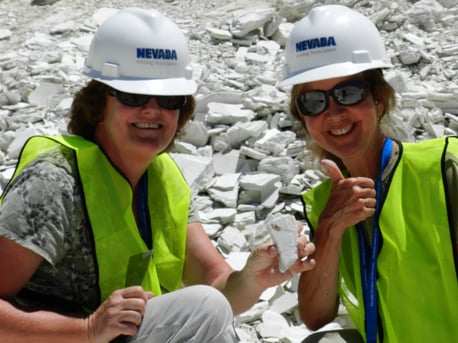 Nevada STEM teachers finding stickleback fish fossils at EP Minerals' diatomaceous earth mine
Nevada STEM teachers finding stickleback fish fossils at EP Minerals' diatomaceous earth mine
Earlier this week, teachers from Northern Nevada took a graduate-level, for-credit course called Earth Systems Matter, at the EP Minerals' Hazen, Nevada diatomaceous earth (DE) mine. This was no ordinary tour, mind you. Not only did the teachers learn about the history and geology of DE (from EP Minerals' Mine & Exploration Manager Skylar Burdette,) they also got to dig for 7-10 million year old stickleback fish fossils! Through the Nevada Mining Association, EP Minerals regularly offers this class to Northern Nevada teachers. It’s critical that teachers go back to their classrooms and teach their students about the importance of mining and minerals in our lives.
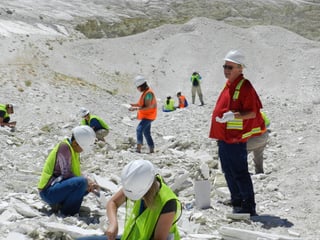 EP Minerals' Skylar Burdette explains geology of DE to Nevada teachers at Hazen, NV mine
EP Minerals' Skylar Burdette explains geology of DE to Nevada teachers at Hazen, NV mine
The course is designed to enhance Science, Technology, Engineering, and Math (STEM) skills, primarily so teachers can expose their students to geology, mining, and minerals. Collecting stickleback fish fossils adds to their science standards and is just plain fun.
Million year old stickleback fish fossils
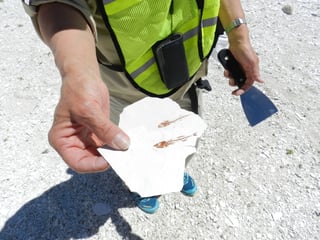 Nevada teachers dig for 10 million year old stickleback fish fossils at the EP Minerals' Hazen DE quarry.
Nevada teachers dig for 10 million year old stickleback fish fossils at the EP Minerals' Hazen DE quarry.
EP Minerals’ diatomaceous earth (DE) mine near Hazen is where Late Miocene (7-10 million year old) stickleback fish (Gasterosteus doryssus) fossils are abundant within the layered diatomite sedimentary rocks.
Every piece of rock picked up at the Hazen mine contains thousands, even millions, of fossils since DE itself is composed of the fossilized skeletal remains of diatoms. Diatoms are microscopic planktonic creatures that inhabited a lake that existed in Nevada between 7 and 10 million years ago in a narrow north-south-trending fault-bounded basin--one of many that were forming in northwestern Nevada at the time, as the Basin-and-Range topography of Nevada was beginning to take shape.
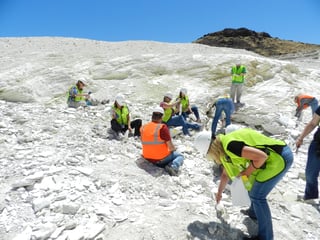
These lakes often hosted different species of diatoms in different lakes, for although close to each other, they did not connect like the later and much more extensive Lake Lahontan. Continuous and repeated faulting along the adjacent mountain ranges caused these basins to deepen over time, and nearby volcanism provided an ample supply of silicic ash to the lakes for the diatoms to use in building their silicic tests (shells). Some diatomaceous layers are even interspersed with layers of volcanic ash. The climate was wetter than today, and the lakes persisted for several million years.
Two fish species are very abundant but usually occur separately: one is the killifish, Fundulus nevadensis, and the other is the stickleback, Gasterosteus doryssus.
Most Nevada diatomites are overwhelmingly composed of one species, Melosira. In its simplest form, the Melosira resembles (in miniature) straight barrels stacked one on top of another, each "barrel" was a single diatom.
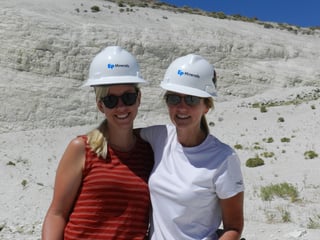
Incredible diatomaceous earth
Today, DE has hundreds of uses. It’s a filtration media to filter liquids such as water, beer, wine, and chemicals. It’s a functional additive in products such as paint, plastics, rubber, and insecticides It’s an absorbent for cat litter and floor dry, and as a source of silica in calcium and other silicates.
The US is the world’s biggest producer of diatomite and EP Minerals' Lovelock plant is the world's largest producing plant. EP Minerals is also Nevada’s top exporter, simply because of the volume of DE that is shipped around the world. EP has been actively producing DE in Nevada since 1945.
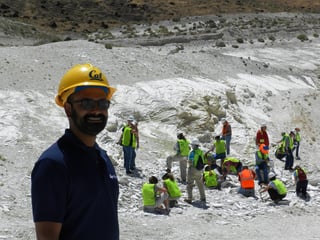
The teachers expressed that this "class" is always one of the most popular and informative because not only do they learn about the amazing uses for diatomite, they also get to take stickleback fish fossils back to their classrooms!
Learn more about DE: Unlock the power of tiny prehistoric fossils
